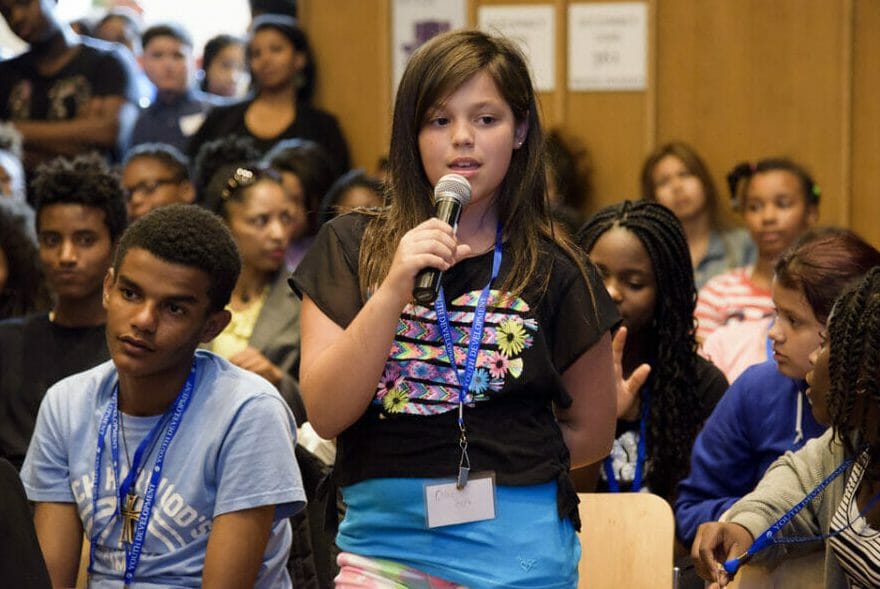As I have written in the article Positive Focus, when we use negative expressions, we focus on the things we do not want. If you have not had a chance to read that article, here is a quick reminder.
Please do not think of a pink elephant dancing, dressed with a tutu.
What happened?
 More than likely, you imagined a pink elephant and maybe, maybe managed to chase it away. I agree, I was very cruel putting the pink elephant in front of you and asking you not to think about it, but hey, life is the same. We see things around us and cannot choose not to see them.
More than likely, you imagined a pink elephant and maybe, maybe managed to chase it away. I agree, I was very cruel putting the pink elephant in front of you and asking you not to think about it, but hey, life is the same. We see things around us and cannot choose not to see them.
Talking in negatives works like this too. We see a sign that says “Don’t drink and drive”, we link drinking with driving, and only then we try to get rid of the thought, but can we?
Many of my clients who develop a deep understanding of the pink elephant concept say there is a big difference between understanding something and changing it and I agree. This is the reason that reading a book, going to a seminar or even reading this post helps only a very small percentage of people (less than 5%) to make a change.
New knowledge, if not immediately implemented and/or repeated will be forgotten in less than 4 days.
There are two parts to making a change from using a negative language to a positive one. The first is to understand how we were programmed to use negative language in our life. We talk about what we are not happy about and we express disappointment and frustration instead of saying what we feel, need and want.
The second part of making the change is to do something different and practice doing it until it becomes the new habit.
To help you make the change, here are some rules you need to remember.
Rule #1 – Every expression containing negatives like un, non, not, don’t, stop, quit, no or never (and even free) is a Pink Elephant
Rule #2 – Being positive with your language takes time and practice. Cut yourself some slack.
Rule #3 – People using Pink Elephants are not negative. They are only repeating expressions they have heard so many times. Be forgiving to others when they use such language, because forgiveness is positive.
Rule #4 – People using positive language are attractive, like magnets. Others feel comfortable around them without really knowing why. Hang around positive people, because they are contagious!
Rule #5 – Children are very sensitive to language. If you tell them what you do not want them to do, their brain only records the very thing you asked them not to do. When you say “Don’t forget”, you actually say “Forget”. Be more cautious with your pink elephants around kids. It is not enough to say “please”. Unfortunately, it will not help you to say “Don’t think of a pink elephant, please!” They will!
Rule #6 – Find your pink elephants and work on them. 3 weeks is all you need to make that change. Any habit can be changed within 21 days.
Rule #7 – When you are stuck and do not have any idea how to change the phrase from negative to positive, ask yourself “What do I want?” This question is the #1 key to freedom. A simple question, “What do I want?” Concentrate on this and the answer will come.
Here are some examples of use of pink elephants that could be problematic in a workplace and some suggestions of positive communication.
Example #1
You are about to say: You are useless and irresponsible!
Think: What do I want?
Try this instead: I need to mail to be sorted by 12 noon. Can you please make it a priority?
In the first statement, the highlighted words carved into the listener’s head are “useless” and “irresponsible”. In the second statement, the highlighted words are “mail”, “12 noon” and “priority”. Which one do you think is going to get you closer to having your mail sorted?
Example #2
You are about to say: Stop interrupting me!
Think: What do I want?
Try this instead: Jim, I am in the middle of something. Please let me finish it and I’ll get back to you when I’m done.
The first statement highlights the interruption, while the second talks about middle of something, finish and get back to you. Will a person keep interrupting you if he knows he will be heard later?
Example #3
You are about to say: I am not going to tolerate late arrivals.
Think: What do I want?
Try this instead: I expect you to arrive for work on time
The first statement highlights “tolerate” “late arrivals”, while the seconds plants in the listener’s head “expect” “arrive” “on time”. Which one is going to be more successful?
With the 7 rules in mind, let us start the process of change. I will include phrases containing pink elephants. Please change them to positive sentences and post your answers below as a comment.
- Don’t forget your keys
- Please don’t touch my precious vase
- I don’t want you to talk to me like this
- I’m not sure I want to do this
- Don’t talk to strangers
- This is not my fault
- Say no to domestic violence
- Stop running around like a little maniac and making these horrible noises all the time
- Quit smoking
- Don’t drink and drive
If you want to practice speaking (and thinking) in a positive way, write a page or an email to someone telling about something you are not happy about, something you find frustrating or that you feel bad about. When you are done freely expressing yourself, count how many pink elephants you have on your page (this is the first stage – recognizing). Use rule #1 to find them.
Now, using the other rules, try to re-write your text using positive words. Yes, some say, it physically hurts and frustrating and impossible to completely rewrite it in a positive way, but it will start your process of change.
Language is not just a blend of sounds. It creates meaning, which creates thinking, which creates attitude, which creates your life.
Watch your language and beware of the Pink Elephants.
Have a positive life,
Ronit











